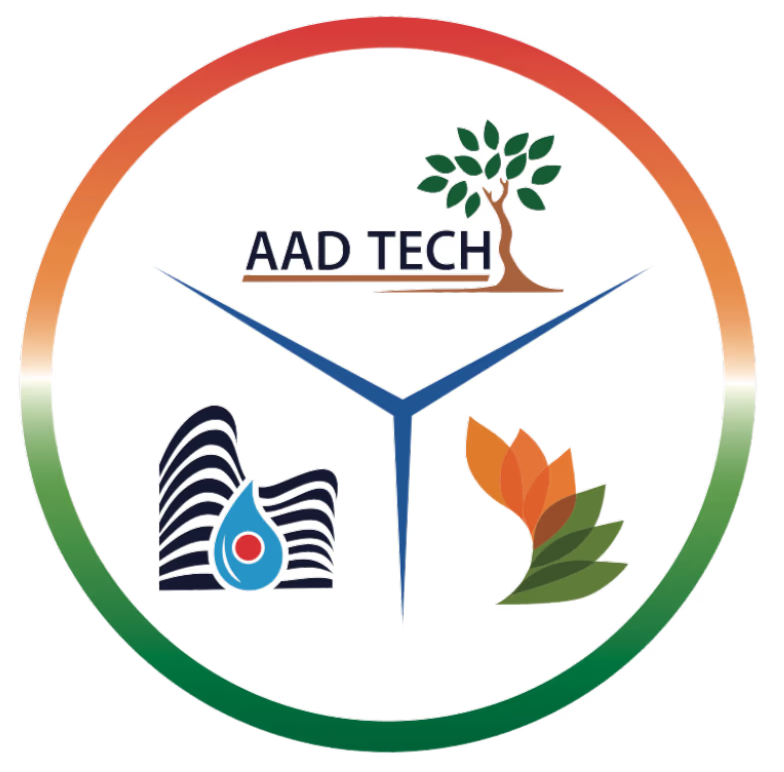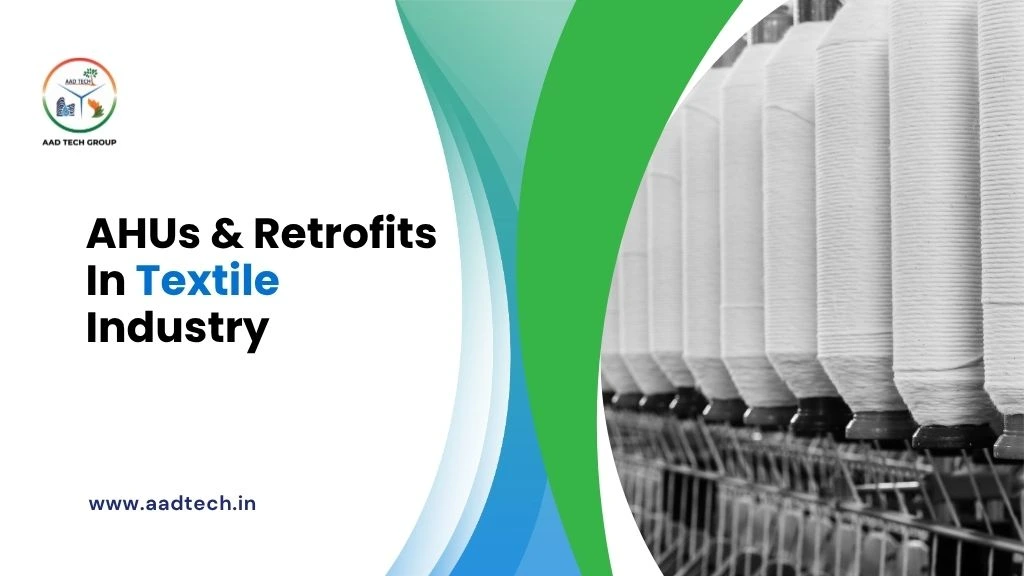In textiles, precision and consistency in environmental conditions are essential. From fiber processing and dyeing to weaving and finishing, every step demands optimum temperature, humidity, and air quality. This is where Air Handling Units (AHUs) step in. They not only offer environmental control but also energy efficiency, comfort for workers, and process dependability.
For the majority of textile factories, especially those with outdated HVAC systems, the installation of new AHUs can be a cost-effective and viable method for performance improvement. Leading HVAC solution providers like AAD Tech are at the forefront of delivering personalized air handling unit upgrades and retrofit solutions in industries like textiles, where the stakes are high and plant shutdown is costly.
Why AHUs Matter in the Textile Industry
The textile fabric-making process involves many operations that are responsive to ambient conditions. Temperature and relative humidity must be maintained under strict tolerances to avoid issues like fiber breakage, static charges, dye uniformity, and warping of the product.
AHUs are the backbones of HVAC in textile mills. They manage airflow, remove dust, process moisture, and deliver thermal conditions across vast production floors. An operational AHU maintains:
- Consistent product quality
- Fewer machine downtime
- Enhanced worker comfort and efficiency
- Compliance with environmental regulations
Because textile HVAC systems are high-energy demanding, even minor inefficiencies in AHU performance will mean significant cost overruns.
The Case for Retrofitting Existing AHUs
The majority of these textile mills still employ outdated HVAC systems that are hardly capable of meeting current performance and energy efficiency standards. Even though an overhaul seems to be the only conceivable solution, AHU retrofit is a fast emerging alternative. It helps buildings to improve performance at a small fraction of the costs and operational disruptions of complete system replacements. Retrofitting aims at improving critical components like:
- Fan systems: Substitution with energy-efficient EC fans saves a lot of power.
- Motors and drives: Substituting existing motors with variable frequency drives (VFDs) offers more control and less wear and tear.
- Filtration units: New filters enhance air quality, reduce maintenance, and prolong the life of HVAC equipment.
- Control systems: Smart controls and sensors allow real-time optimization of temperature, humidity, and ventilation.
AAD Tech has worked intensively with textile mills to retrofit AHUs with modern components in accordance with the energy standards of the current industrial situation. The result is lower cost of operation, improved environmental management, and increased equipment life.
Essential Benefits of AHU Retrofitting in Textile Mills
1. Energy Efficiency
HVAC systems are among the top energy consumers in textile plants. AHU retrofits, especially with EC fan technology and smart controls, can lead to 20-40% energy savings. These savings add up quickly in round-the-clock production environments.
2. Better Environmental Control
Retrofitted AHUs offer improved airflow distribution, humidity regulation, and temperature precision. This results in better handling of moisture-sensitive fibers such as cotton and wool, ensuring consistency in product quality.
3. Improved Indoor Air Quality
Airborne fiber and dye particulates are prevalent in textile environments. Upgrade to advanced filters and airflow systems reduces contamination and facilitates healthier working space and cleaner production area.
4. Reduced Downtime and Maintenance
New AHU components are energy-efficient and need less maintenance. Retrofitting avoids most failure points in existing systems, leading to less downtime and reduced maintenance costs.
5. Sustainability and Compliance
Energy-efficient AHUs reduce the carbon footprint of textile activities. In an industry that’s more focused on sustainability and ESG reporting, HVAC upgrades can contribute a great deal to green manufacturing efforts.
How AAD Tech Supports the Textile Industry
AAD Tech has emerged as a trusted partner in providing HVAC retrofitting solutions to the textile industry. AAD Tech provides tailored retrofitting of AHUs to industry requirements with negligible plant shutdown time. From system diagnostics and performance audits to component replacement and post-installation tuning, AAD Tech provides end-to-end support.
Their Indian and global experience with textile mills has established that well-designed AHU retrofitting can convert aging, inefficient HVAC equipment into energy-efficient, high-performance assets.
Conclusion
In the hyper-competitive environment of textile manufacturing, AHUs are not just climate control machinery, they are critical components of quality control, energy efficiency, and business resilience. Retrofitting these systems is a smart, sustainable path to cost savings, performance improvement, and competitiveness for buildings.
Textile producers can now modernize their HVAC systems with confidence without sacrificing productivity and budgets. The future of textile climate control is not just in new installations but in intelligent upgrading of existing conditions.

